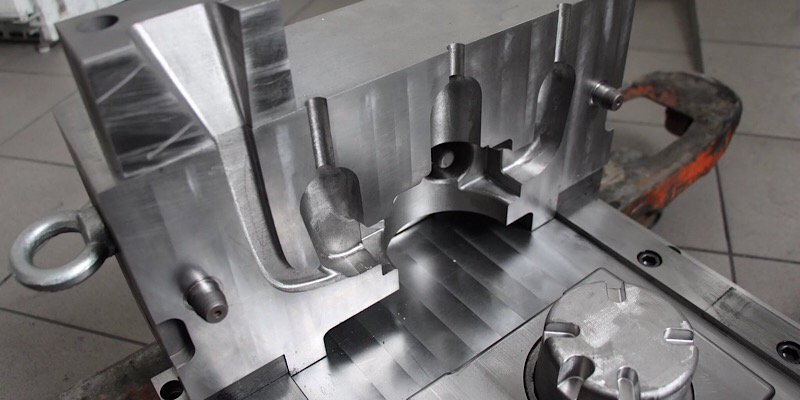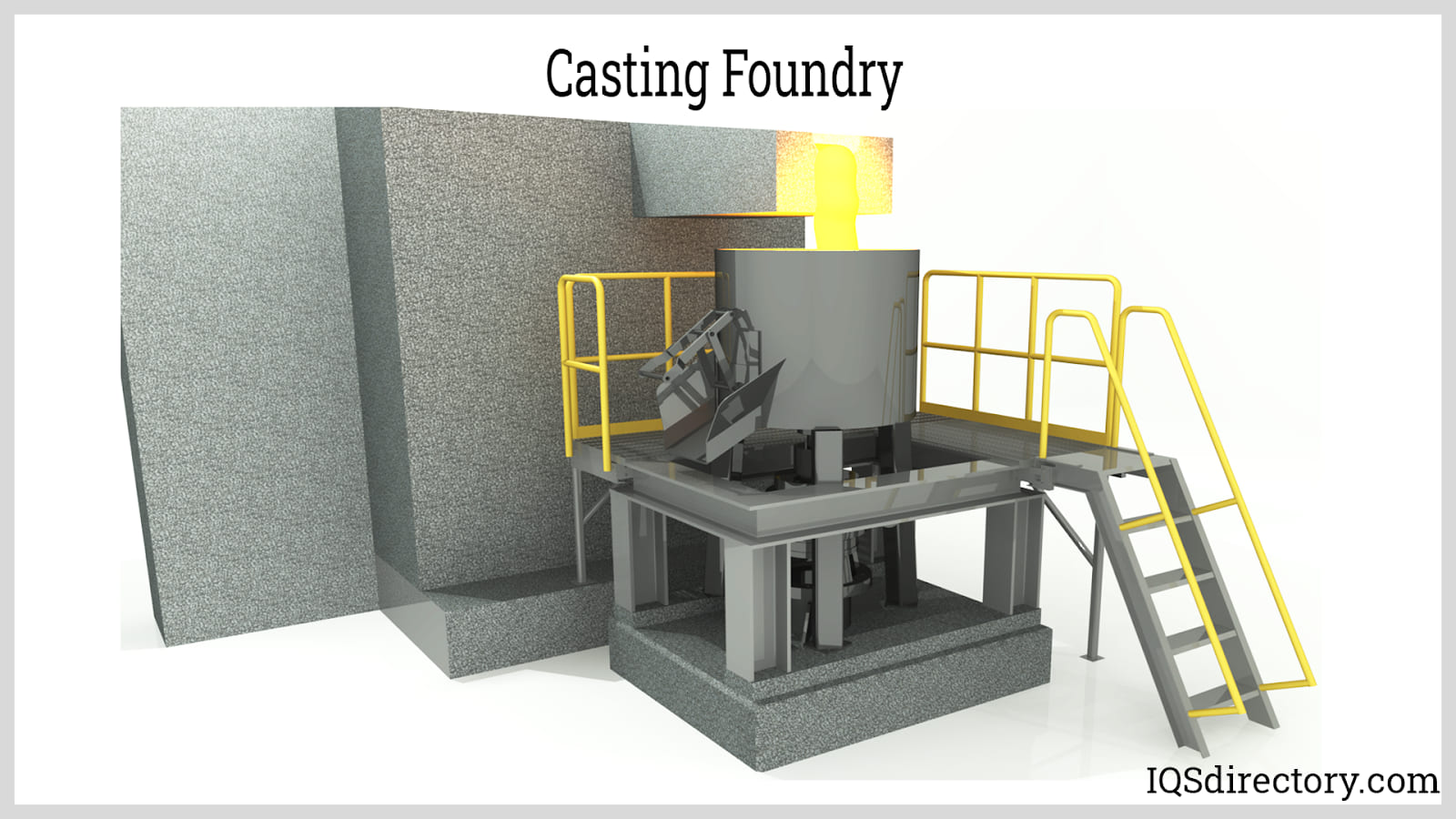Just How Aluminum Foundry Adds To Innovations in Aerospace Engineering
Aluminum factories are essential to innovations in aerospace engineering. They produce lightweight, high-strength components that are important for modern-day airplane. With innovative spreading strategies, these factories produce intricate geometries that enhance architectural honesty. Furthermore, the advancement of exceptional Aluminum alloys sustains the industry's emphasis on gas performance and sustainability. Nevertheless, difficulties continue to be in the production procedure. Recognizing these elements discloses the extensive impact of Aluminum on aeronautics's future.
The Importance of Lightweight Products in Aerospace Layout
As the aerospace sector remains to develop, the importance of light-weight materials ends up being increasingly apparent. The need for performance and sustainability drives designers to focus on the usage of products that lower general weight without compromising architectural stability. Light-weight products, particularly Aluminum, play a necessary role in enhancing gas efficiency, boosting haul capability, and enhancing the overall performance of aircraft.
The combination of these materials allows for ingenious styles, enabling makers to produce even more wind resistant shapes that can hold up against extreme problems. The reduction in weight not only decreases operational prices yet additionally contributes to a decreased ecological footprint, aligning with global initiatives towards sustainability in aeronautics.
Advanced Spreading Techniques in Aluminum Foundries
Advanced casting methods in Aluminum shops play a crucial role in aerospace engineering by making it possible for the manufacturing of light-weight and exact elements. Advancements in mold and mildew design and precision casting processes are crucial in attaining optimal efficiency and architectural honesty. In addition, the development of lightweight alloys improves the total efficiency and effectiveness of aerospace applications.
Innovative Mold Design
Innovative mold and mildew layout plays a necessary function in the performance and performance of Aluminum shops, especially within the aerospace sector. By leveraging innovative products and methods, contemporary molds can be engineered to stand up to high temperature levels and pressures, ensuring peak efficiency throughout the spreading process. These styles often integrate complex geometries that permit the manufacturing of lightweight yet structurally audio components, important for aerospace applications. Furthermore, making use of computer-aided design (CAD) software application assists in accurate modeling, allowing foundries to replicate and improve mold and mildew designs before physical manufacturing begins. This not just improves the high quality of actors parts however also lowers waste and lead times, resulting in considerable price savings. Overall, innovative mold design is a cornerstone of progression in Aluminum Foundry technology for aerospace design.
Precision Casting Processes
The effectiveness of cutting-edge mold layouts flawlessly incorporates with accuracy casting processes, which are important for generating high-quality Aluminum components in aerospace design. These procedures, including sand casting, die casting, and investment spreading, guarantee the creation of complex geometries with limited tolerances. Advanced techniques like vacuum cleaner spreading and pressure die casting boost the honesty and surface area finish of the last items. Accuracy spreading lessens product waste while taking full advantage of the mechanical buildings of Aluminum, crucial for aerospace applications. Furthermore, using real-time monitoring and advanced simulation tools during the spreading procedure enables prompt adjustments, causing enhanced quality assurance. Jointly, these precision casting processes position Aluminum shops at the leading edge of aerospace development, supporting the sector's demand for dependability and efficiency.
Lightweight Alloy Growth
As aerospace designers seek to boost fuel efficiency and performance, light-weight alloy advancement comes to be an essential emphasis in Aluminum foundries. These shops employ innovative casting techniques to produce alloys that give remarkable strength-to-weight ratios. Technologies in alloy structure, including the unification of elements like lithium and magnesium, make it possible for the production of products that endure severe problems while minimizing overall airplane weight. Strategies such as die spreading and investment spreading facilitate the precision manufacturing of complicated shapes, which are vital for aerospace applications. Furthermore, ongoing research study aims to enhance these alloys for boosted mechanical properties and enhanced durability. By prioritizing light-weight alloy growth, Aluminum foundries considerably add to the advancement of aerospace design, leading the way for more lasting and efficient aircraft styles.

Enhancing Architectural Stability Via Aluminum Elements
Aluminum parts offer substantial benefits in boosting architectural stability within aerospace design. Their light-weight nature adds to general effectiveness while preserving strength, which is crucial for airplane performance. Additionally, the tension resistance buildings of Aluminum aid assure the durability and integrity of aerospace structures under numerous functional conditions.
Light-weight Product Perks
While standard materials often jeopardize weight for strength, making use of Aluminum elements in aerospace design uses considerable advantages in architectural integrity. Aluminum's lightweight nature adds to general design performance, permitting more structured airplane that take in much less gas, therefore boosting sustainability. The product's excellent strength-to-weight proportion guarantees that elements preserve resilience without including unnecessary mass. This quality cultivates boosted performance and dexterity in trip, in addition to enhanced haul capacities. In addition, Aluminum's resistance to rust prolongs the life expectancy of aerospace frameworks, lowering upkeep costs and boosting safety. As suppliers increasingly take on Aluminum alloys, the aerospace market experiences a transformative change in the direction of much more efficient and reliable engineering services that prioritize both efficiency and environmental obligation.
Stress Resistance Residences
Various materials possess unique buildings, Aluminum's remarkable stress and anxiety resistance stands out as an essential element in improving the structural stability of aerospace elements. This resistance plays an essential function in guaranteeing that aircraft can stand up to numerous operational stresses, consisting of tiredness, effect, and ecological problems. Aluminum alloys, especially crafted for aerospace applications, display high tensile strength while keeping light-weight qualities, allowing engineers to design extra reliable her latest blog frameworks - Aluminum Foundry. Additionally, the capability of Aluminum to withstand cyclic loading without considerable deformation adds to the durability and dependability of aerospace components. As improvements continue in Aluminum Foundry techniques, the development of stress-resistant Aluminum parts guarantees further improvements in efficiency, security, and efficiency throughout the aerospace market, solidifying Aluminum's function as a favored material in contemporary engineering
Gas Effectiveness Improvements Driven by Aluminum Innovations
As the aerospace industry looks for to enhance fuel efficiency, ingenious uses Aluminum have arised as a crucial service. Aluminum's light-weight nature significantly minimizes airplane weight, enabling for lower gas consumption throughout flight. This decrease in weight is crucial, as even little decreases can cause significant enhancements in general fuel economic climate.
Advanced Aluminum alloys, designed for improved strength and durability, allow producers to develop components that preserve structural stability while minimizing mass - Aluminum Foundry. In addition, the integration of Aluminum in airframes and engine elements helps with enhanced the rules of aerodynamics, adding to lowered drag and increased effectiveness
The fostering of Aluminum in aerospace not only meets the demand for fuel-efficient style yet also lines up with regulative stress for reduced discharges. As these technologies remain to advance, they play a significant role in establishing brand-new find this benchmarks for fuel performance, ensuring that the aerospace industry can satisfy expanding ecological and financial difficulties.

The Duty of Aluminum in Sustainable Aviation Practices
The increasing focus on lasting aeronautics techniques has actually placed Aluminum as a necessary material in the pursuit for greener airplane style. Understood for its light-weight buildings, Aluminum substantially minimizes aircraft weight, resulting in lower gas intake and discharges. Its recyclability additionally improves its sustainability profile, as Aluminum can be recycled indefinitely without loss of quality. This characteristic sustains a circular economic climate within the air travel industry, reducing waste and resource deficiency.
Advancements in Aluminum alloys have improved their toughness and deterioration resistance, permitting for longer service life and lowered upkeep needs. These technologies help with the growth of much more efficient airplane structures, adding to total sustainability efforts. In addition, Aluminum's thermal conductivity plays a crucial function in energy-efficient layouts, enhancing systems such as heat exchangers. Jointly, these attributes emphasize Aluminum's pivotal function beforehand sustainable aeronautics, aligning with international initiatives aimed at lowering the environmental effect of flight.
Difficulties Faced by Aluminum Foundries in Aerospace Manufacturing
While Aluminum shops play a vital duty in aerospace manufacturing, they deal with considerable difficulties that can affect production effectiveness and high quality. One significant obstacle is the strict high quality control standards needed in the aerospace sector. Any type of issue can jeopardize security and efficiency, necessitating extensive examination procedures that expand production timelines. Additionally, foundries often emulate varying basic material prices, which can affect pricing and success. The complexity of Aluminum alloys utilized in aerospace applications additional complicates the manufacturing process, as specific formulations are crucial for achieving wanted mechanical homes. Skilled labor scarcities impede the ability to keep high-grade manufacturing degrees. Ultimately, ecological guidelines impose restrictions on discharges and waste monitoring, calling his comment is here for shops to purchase sustainable techniques, which can be cost-prohibitive. These elements jointly create a landscape where Aluminum shops should continuously adjust to satisfy the evolving demands of aerospace production while making certain safety and security and conformity.
Future Patterns in Aluminum Applications for Aerospace Engineering
With developments in technology and raising demands for effectiveness, the future of Aluminum applications in aerospace engineering is poised for considerable change. The assimilation of cutting-edge Aluminum alloys and compounds is expected to boost strength-to-weight ratios, resulting in even more fuel-efficient aircraft designs. In enhancement, advancements in additive manufacturing techniques will certainly enable the manufacturing of complex Aluminum frameworks that were previously difficult, enhancing efficiency and decreasing waste.

Sustainable methods will certainly play an important function, with an expanding focus on reusing Aluminum to decrease ecological effect. The aerospace field is most likely to welcome smarter manufacturing processes, such as automation and man-made knowledge, making sure better and precision in Aluminum components. Collaborations in between Aluminum shops and aerospace business will foster research and growth, paving the way for new applications that meet the stringent requirements of modern aerospace design. On the whole, the future looks guaranteeing for Aluminum's role fit the skies
Often Asked Concerns
What Are the Environmental Influences of Aluminum Manufacturing in Aerospace?
The environmental impacts of Aluminum production in aerospace consist of considerable energy consumption, greenhouse gas exhausts, and environment disruption. In addition, mining processes can lead to soil destruction and water contamination, increasing concerns concerning sustainability and environmental balance.
How Does Aluminum Contrast to Other Products in Aerospace Applications?
Aluminum offers an unique mix of light-weight homes, corrosion resistance, and cost-effectiveness contrasted to other materials. Its high strength-to-weight ratio makes it especially beneficial for aerospace applications, boosting fuel efficiency and total performance in airplane design.
What Credentials Do Aluminum Foundry Workers Demand for Aerospace Projects?
Aluminum Foundry workers need specialized training in metallurgy and casting strategies, along with understanding of aerospace sector standards. Qualifications in quality control and safety and security protocols are likewise necessary to ensure conformity with strict aerospace job needs.
Are There Any Type Of Safety And Security Worry About Utilizing Aluminum in Aerospace Engineering?
Safety concerns regarding Aluminum in aerospace engineering consist of susceptibility to stress and anxiety, corrosion, and fatigue cracks. Correct treatment and alloy selection are crucial to mitigate these risks, ensuring architectural honesty and overall safety in aerospace applications.
How Does Aluminum Recycling Benefit the Aerospace Industry?
Aluminum reusing substantially benefits the aerospace industry by reducing product costs, reducing environmental impact, and conserving energy. This sustainable technique boosts the sector's effectiveness while promoting using light-weight, high-performance parts in airplane manufacturing.
Advanced casting strategies in Aluminum shops play a crucial role in aerospace design by allowing the production of light-weight and exact parts. Cutting-edge mold design plays an essential role in the performance and efficiency of Aluminum foundries, specifically within the aerospace market. As aerospace engineers look for to improve fuel efficiency and efficiency, lightweight alloy development comes to be a necessary focus in Aluminum factories. Aluminum alloys, specifically crafted for aerospace applications, display high tensile toughness while preserving light-weight characteristics, allowing engineers to create much more effective frameworks. Collaborations between Aluminum shops and aerospace business will foster research study and development, leading the means for new applications that fulfill the rigid requirements of contemporary aerospace engineering.